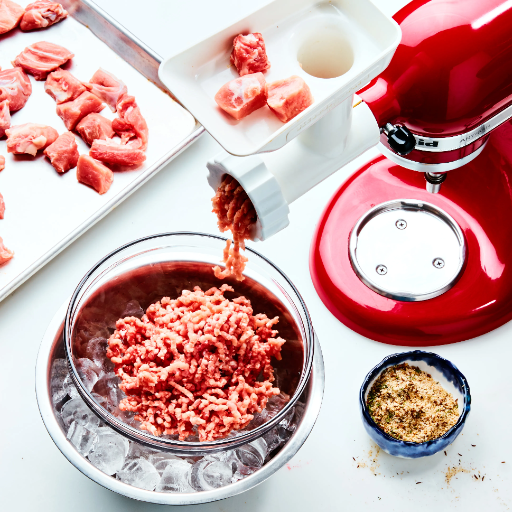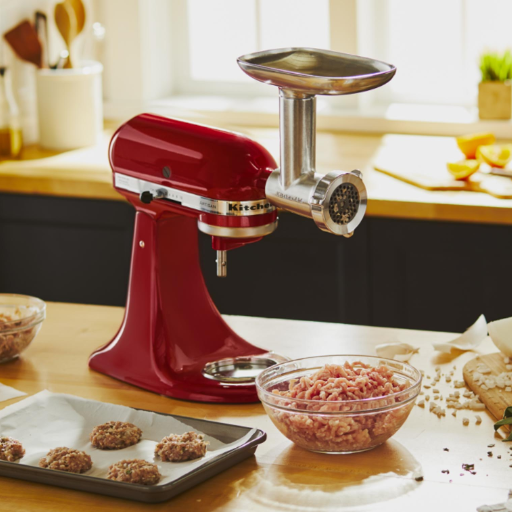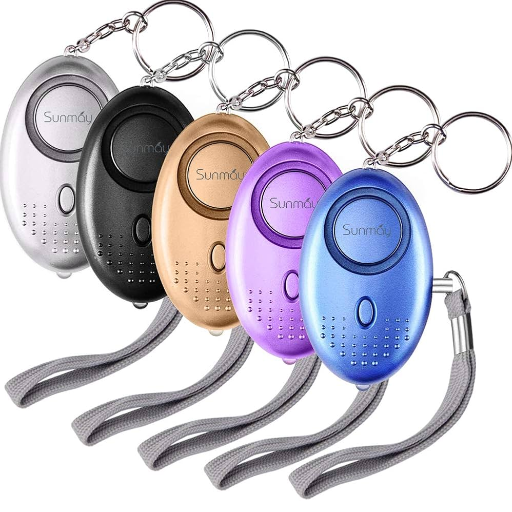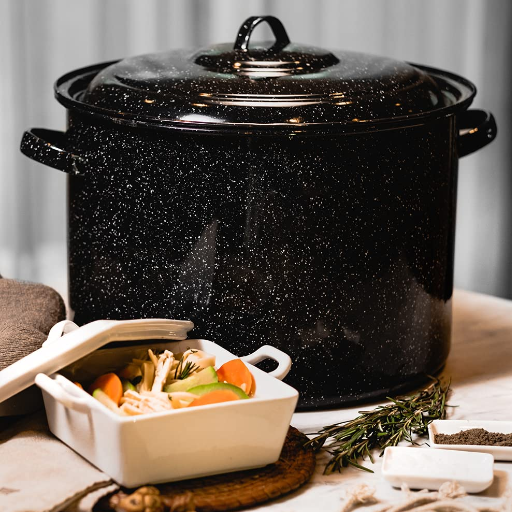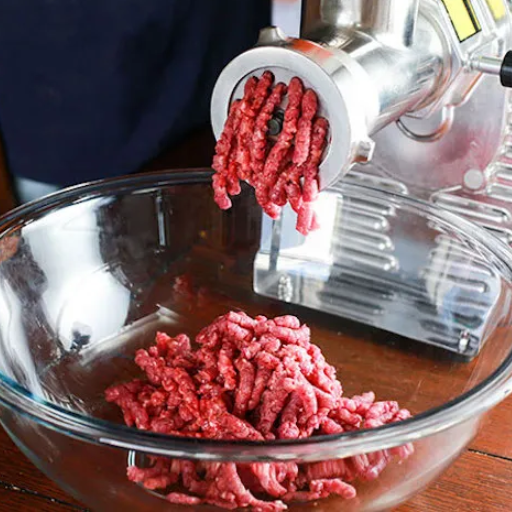Aluminum pots are famous just about everywhere because they are easy to use, light, and heat up quickly. The new and advanced technology in cooking practices almost guarantees that you will stumble upon advanced aluminum cookware at one point or another. Here, we thoroughly explain everything about cooking pots and cookware made of aluminum – the advantages they offer, what issues can arise with them, how to maintain them, and how they compare to other kitchen utensils. This article investigates everything from the effects of their production on the environment to how one should use and maintain the pots. We hope this would be enough to enlighten you for your future kitchen decisions.
What are the advantages of using aluminum pots?

Aluminum pots offer several advantages that make them a popular choice for many kitchens. Firstly, they are excellent conductors of heat, ensuring even cooking and reducing the likelihood of burnt spots. They are lightweight, making them easy to handle and maneuver, especially when dealing with large quantities. Additionally, aluminum pots are usually more affordable compared to other materials, providing great value for their functionality. Many aluminum pots are also highly durable and, when anodized, resist corrosion and staining, further enhancing their longevity and usability in various cooking scenarios.
How does aluminum compare to other cookware materials?
Aluminum cookware has exceptional heat conductivity, which is much more efficient than stainless steel because it distributes heat evenly and reduces hot spots. Another benefit is the light weight; this allows for easy handling in contrast to heavy materials such as cast iron. However, uncoated aluminum could alter flavors of acidic or alkaline foods when cooked, while stainless steel or cast iron doesn’t have this drawback. Anodized aluminum solves this problem by having a non-reactive and durable surface yet still aluminum’s heat conductiveness. In comparison to nonstick coatings, aluminum cookware is more versatile because it withstands higher temperatures, although it requires more attention to prevent discoloration or warping over time. Anodized aluminum achieves a balance of affordability, practicality, and versatility for different individual cooking needs.
What makes aluminum pots ideal for heat distribution?
Aluminum is an excellent conductor of heat, transferring and distributing it rapidly and evenly across the surface of cookware. This efficiency ensures consistent cooking results and minimizes the risk of hot spots that can burn food. Its lightweight nature further enhances usability, making it easy to maneuver while maintaining superior thermal performance. Additionally, aluminum heats up quickly and responds effectively to temperature adjustments, providing better control during cooking. These qualities make it a preferred choice for tasks that demand precision and uniform heating.
Are aluminum pots lightweight and easy to handle?
Yes, aluminum pots are inherently lightweight, which makes them easy to lift and maneuver, even during extended use. Their low weight is particularly useful for tasks that involve frequent stirring or pouring. Additionally, aluminum’s excellent heat conductivity ensures quick and even cooking, reducing the strain of prolonged cooking times. These features contribute to their reputation as a practical and user-friendly option in the kitchen.
How do I choose the right aluminum pot for my cooking needs?

When choosing the right aluminum pot, consider the type of cooking you do most often. For boiling, steaming, or making soups, a large pot with a sturdy base is ideal. If you frequently sauté or fry, opt for a skillet or sauté pan with a non-stick coating. Additionally, think about the durability and thickness of the aluminum—thicker pans distribute heat more evenly and are less prone to warping. Handles that are heat-resistant and firmly attached can ensure safety and ease of use. Finally, evaluate whether coated or anodized aluminum is better for your needs, as these options offer added durability and resistance to corrosion.
What sizes and types of aluminum pots are available?
Aluminum pots come in a wide range of sizes and types to suit various cooking needs. Common sizes include small saucepans of 1-2 quarts for tasks like heating sauces or liquids, medium pots of 3-5 quarts perfect for soups or stews, and larger stockpots that range from 6 quarts to over 20 quarts, ideal for boiling, steaming, or large-scale cooking. Types of aluminum pots include basic saucepans, stockpots, sauté pans, Dutch ovens, and multi-purpose pans with lids. Many are available in standard or non-stick finishes, while some are anodized for added strength and resistance to wear. These features make aluminum pots versatile and reliable for both home cooking and professional kitchens.
Should I consider anodized aluminum cookware?
Indeed, anodized aluminum cookware should be considered for purchase as it possesses better durability, a nonreactive surface, and resistance to wear. Anodization makes aluminum harder and prevents it from reacting with acidic or alkaline foods, thus ensuring safer cooking and better flavor preservation. Also, the pieces of cookware are generally nonstick, easily cleaned, and evenly distribute heat, which makes them practical for different cooking needs. That said, they do tend to cost more than regular aluminum cookware, and they are not always dishwasher safe, so preferences and maintenance habits should be considered when making a decision.
What features should I look for in a quality aluminum pot?
Below are the most important aspects of a high-quality aluminum pot that you should consider:
Materials and Coatings – Cookware made of hard-anodized aluminum is best because it is more resistant to wear and does not suffer corrosion. While non-stick coatings do improve the functionality of the pot and make it easier to clean, the coating applied must not have PFOA or PFAS as they are detrimental to one’s health.
Durability and Thickness – The thicker the base and the walls of the pot, the better. Durability increases with thicker structures. Thinner pots tend to have uneven heating, which makes them more susceptible to denting as time goes on.
Versatility and Compatibility – Check if the pot fits well within your entire cooking setup. If the stovetop is induction friendly, the pots should be oven safe with multiple sized openings. This improves it’s applicability for varios recipes.
Handles and Lids – Maximum security and comfort comes from sturdy heat resistant handles and lids made of tempered glass. This allows for keeping and monitoring of heat, ensuring effective cooking progress observation.
Are there any health concerns associated with aluminum cookware?

Aluminum cookware is generally considered safe for cooking, especially when it is anodized or coated, as this prevents the aluminum from leaching into food. However, concerns have been raised about potential health risks when cooking highly acidic or salty foods in uncoated aluminum, as these can cause aluminum to leach in small amounts. While the FDA deems aluminum cookware safe, individuals who prefer to limit their exposure can opt for cookware made from alternative materials like stainless steel or cast iron.
Is there a link between aluminum pots and Alzheimer’s disease?
The linkage of aluminum exposure and Alzheimer’s disease is one of the most debated topics in the domain of scientific research. In the past, it was believed that aluminum may contribute to Alzheimer’s because aluminum was found in the brains of some Alzheimer’s patients. However, later research has failed to find a solid causal correlation. Also, the major health bodies, like the Alzheimer’s Association, stress that there is no conclusive proof from cookware aluminum or any other source heightens the risk for Alzheimer’s. As for cookware, it is believed that the daily exposure through cookware is quite small and well within safe limits, especially with new protective coatings. For others, the concern of exposure can be minimized by using non-aluminum cookware or simply avoiding the cooking of very acidic food in untreated aluminum pots.
Do aluminum pots leach into food, especially acidic dishes?
Yes, aluminum pots can leach small amounts of aluminum into food, particularly when cooking acidic dishes such as tomato-based sauces or citrus-filled recipes. When aluminum comes into contact with acidic ingredients, it reacts to form soluble aluminum salts that can transfer into the food. However, the amount leached is generally very small and not considered harmful for the majority of people. Modern cookware often includes anodized or coated aluminum, which significantly reduces leaching. To minimize exposure, it is recommended to use coated or anodized aluminum cookware or opt for alternative materials like stainless steel or glass when preparing highly acidic dishes.
How can I minimize potential health risks when using aluminum pots?
In an effort to lower possible health risks, it is best to use anodized or coated aluminum cookware since these materials are less likely to leach. Avoid the preparation of highly acidic or overly salty dishes, as these increase the rate at which aluminum is leached into food. Replace any scratched or worn pots, as their coatings may be damaged and exposing the aluminum beneath the coating. It may also be advantageous to use stainless steel, cast iron, or glass for some recipes in order to reduce aluminum exposure. Thoughtful selection of pots and pans, along with proper care, minimizes aluminum’s impacts on health.
How do I properly care for and maintain my aluminum pots?

To maintain the appearance and functionality of your aluminum pots, begin caring for them by handwashing with warm water, mild soap, and a soft sponge. If scratches are a concern, avoid placing the pots in a dishwasher. Do not use harsh chemicals, cleansers or scouring pads as these will damage the pot’s protective layer and reduce its lifespan. Be certain to dry the pots after washing them, as water spots and oxidation can leave discoloration marks. Should there be persistent discoloration, consider boiling water, white vinegar, or lemon juice in the pot and scrubbing it afterwards. Whenever possible, avoid using aluminum pots for storing acidic or salty foods, as doing so will lead to corrosion of the seal. While, these pots are a health hazard at times, gentle maintenance and appropriate care can prolong their lifespan.
What’s the best way to clean aluminum cookware?
To effectively clean aluminum cookware, first, soak them in warm water to loosen dirt and grease, then apply mild dish soap and scrub with a soft sponge. For more stubborn stains, use a paste of water and baking soda, gently scrub with a soft cloth, rinse it, and then pat dry with a cloth. Do not use abrasive pads, as they will scratch aluminum. To bring back the aluminum’s luster, boil a solution of water, white vinegar, and a pinch of salt in the cookware; after rinsing, make sure you dry it completely. Make sure to avoid using a dishwasher, as washing aluminum cookware will result in discoloration and damage over time,which will cause permanent damage.
How can I prevent scratches and damage to my aluminum pots?
To avoid scratching or damaging the surfaces of your aluminum pots, use wooden, silicone, or plastic utensils, as they will not scrape the surface. To reduce friction, stack the pans and pots by placing a soft cloth or a pan protector in between them. When cleaning, do not use abrasive sponges, steel wool, or harsh cleaning agents, as they will erode the surface. Instead, use a soft sponge or a non-abrasive pad. Also, do not expose the cookware to extremely high heat for a long time, as this may cause discoloration or warping.
Are aluminum pots dishwasher safe?
In general, the use of aluminum pots in dishwashers is discouraged. The strong detergents and high heat utilized in dishwashers may lead to corrosion, discoloration, and destruction of the aluminum’s finish over time. Although certain modern aluminum pots claim to be “dishwasher safe,” handwashing them with warm water, a gentle sponge, and mild detergent is usually the best approach to maintain their quality and prolong their lifespan.
What are the best aluminum pot brands and products on the market?

There are several reputable brands that produce high-quality aluminum pots, known for their durability, performance, and craftsmanship. Some of the most recommended brands include:
All-Clad: Renowned for its hard-anodized aluminum cookware, offering excellent heat distribution and nonstick surfaces.
Calphalon: Known for their sturdy, easy-to-clean aluminum pots featuring nonstick coatings and sleek designs.
Cuisinart: Provides versatile and affordable aluminum cookware options with durable construction.
T-fal: Offers budget-friendly anodized aluminum pots with features like Thermo-Spot technology for precise heating.
Viking Culinary: Popular for premium aluminum cookware that combines sophisticated design with high functionality.
These brands often have a variety of pot sizes and styles, perfect for different cooking needs. Always opt for a product that matches your cooking preferences and offers the right balance of quality, price, and durability.
Which aluminum stockpots offer the best value for money?
When evaluating aluminum stockpots for the best value for money, consider options that balance durability, performance, and affordability. The following stockpots stand out:
Cuisinart Chef’s Classic 12-Quart Stockpot: Made with hard-anodized aluminum and a nonstick coating, this stockpot offers even heat distribution, easy cleaning, and excellent durability at a mid-range price point.
T-fal Specialty 12-Quart Nonstick Stockpot: Known for its affordability, this pot features a lightweight aluminum core, ensuring quick and even heating. It also has a nonstick interior for effortless food release and cleaning.
Tramontina 16-Quart Aluminum Stockpot: Ideal for large-scale cooking, it boasts heavy-duty construction with a satin finish for added durability. It offers premium performance while remaining competitively priced compared to other large-capacity stockpots.
Each option provides reliable quality and performance, making them excellent choices for both casual cooks and culinary enthusiasts.
Are there any recommended aluminum cookware sets?
There are several highly recommended aluminum cookware sets available that combine durability, affordability, and excellent cooking performance:
T-fal Ultimate Hard Anodized Nonstick 17-Piece Set: This set is praised for its hard anodized aluminum construction, ensuring even heat distribution and long-lasting durability. The nonstick coating makes cooking and cleaning effortless, and it includes a wide variety of cookware for versatile meal preparation.
Rachael Ray Cucina Nonstick Aluminum 12-Piece Set: Stylish and functional, this set features sturdy aluminum construction with a nonstick surface for easy food release. Its rustic, modern design and wide color choices make it both a practical and aesthetic addition to any kitchen.
Cuisinart Chef’s Classic Nonstick Hard Anodized 11-Piece Set: Known for its professional-grade performance, this set delivers exceptional heat conductivity thanks to its hard anodized aluminum base. The nonstick surface ensures healthy cooking and easy cleanup, while the ergonomic handles provide comfort and control.
These sets offer a reliable balance of quality, affordability, and versatility, catering to both amateur and professional chefs alike.
What are the top-rated aluminum pots with lids?
Here are some of the best aluminum pots with lids currently available:
Cuisinart Chef’s Classic 8-Quart Stockpot with Cover – This large-capacity aluminum stockpot is perfect for soups, stews, and pasta. It features an aluminum core for quick, even heating, a tight-fitting stainless steel lid to seal in flavors, and a nonstick cooking surface for easy cleanup. Its durability and affordability make it a favorite among home cooks.
T-fal Specialty Nonstick Stockpot, 12-Quart – Ideal for large meals, this pot is constructed with heavy-gauge aluminum to ensure even heat distribution. The nonstick interior promotes healthier cooking with less oil, and the vented glass lid allows for monitoring the cooking process while retaining moisture.
Calphalon Classic Nonstick Covered Stockpot, 5-Quart – Designed for smaller households, this pot combines hard-anodized aluminum construction for superior performance with a PFOA-free nonstick layer for safe and easy cooking. The tempered glass lid is both durable and functional, allowing you to keep an eye on your cooking.
These top-rated options are praised for their durability, usability, and efficiency in the kitchen, delivering excellent results across a variety of cooking tasks.
How do aluminum pots compare to stainless steel and cast iron cookware?

Aluminum pots are popular for their brilliant conducting properties as they enable quick and even heating, which is perfect for simmering or sautéing. Alongside stainless steel, aluminum is lighter and cheaper, however, uncoated or unanodized aluminum scratches easily and reacts with acidic foods. Cast iron cookware is much heavier due to its robust construction, allowing for excellent heat retention and proper durability, but it requires maintenance to prevent rusting. In contrast with the versatility and consistency provided by aluminum pots, stainless steel and cast iron provide durability and proficiency based on specific culinary requirements.
Aluminum vs. stainless steel: Which is better for cooking?
The choice between aluminum and stainless steel cookware depends on your cooking style and preferences. Aluminum is an excellent conductor of heat, ensuring even cooking and faster temperature adjustments, which makes it ideal for tasks like frying or sautéing. However, uncoated aluminum can react with acidic or alkaline foods, potentially altering flavors, unless it’s anodized or coated. It’s lightweight and cost-effective but less durable than stainless steel.
On the other hand, stainless steel is prized for its durability, resistance to corrosion, and non-reactive nature, making it perfect for cooking a wide variety of dishes, including acidic recipes like tomato-based sauces. While it doesn’t conduct heat as well as aluminum, high-quality stainless steel often incorporates aluminum or copper cores to improve heat distribution. Stainless steel is heavier and sometimes pricier but offers longevity and versatility for many cooking techniques.
Ultimately, aluminum is better suited for quick, even heat and affordability, while stainless steel excels in durability, non-reactivity, and longevity, making it a top choice for professional and home kitchens alike.
Cast aluminum vs. cast iron: What are the key differences?
When comparing cast aluminum and cast iron, the key differences lie in their weight, heat retention, durability, and maintenance. Cast aluminum is significantly lighter than cast iron, making it easier to handle and ideal for cookware that needs to be frequently moved. It heats up quickly and offers excellent heat conductivity but loses heat faster once removed from the heat source. Conversely, cast iron is much heavier and excels in heat retention, providing steady, even cooking for extended periods.
Durability also sets the two apart. Cast iron is highly robust and can last for decades with proper care, while cast aluminum is less durable and more prone to warping or damage over time. Maintenance requirements differ as well—cast iron requires regular seasoning to maintain its non-stick surface and prevent rust, while cast aluminum is low-maintenance and often features a non-stick coating for convenience. Choosing between the two depends on your cooking needs, budget, and preferences for weight and upkeep.
When should I choose an aluminum pot over other materials?
Aluminum pots are ideal when you need lightweight, affordable, and highly conductive cookware. They are perfect for tasks requiring quick heating and precise temperature control, such as boiling, simmering, or cooking delicate dishes like sauces. Since aluminum is an excellent heat conductor, it ensures even cooking, reducing the risk of hot spots. Additionally, aluminum pots with non-stick coatings simplify cooking and cleaning, making them a practical option for everyday use. They are especially suitable for those prioritizing convenience, ease of handling, and affordability over long-term durability. However, they may not be the best choice for high-heat cooking or when longevity is a key factor.
Can aluminum pots be used for outdoor cooking and camping?

The low weight of aluminum pots makes outdoor cooking and camping more convenient. They are easy to transport and their efficient conduction of heat makes cooking over portable stoves or campfires effective. However, care must be taken to not use uncoated aluminum with acidic or salty foods due to potential reactivity issues. Choosing anodized aluminum pots makes them ideal for rugged outdoor conditions since they are more resistant to scratches and other forms of rough handling.
What makes aluminum pots suitable for camping trips?
Due to their lightweight construction, aluminum pots are great for camping because they are easy to transport during long hikes or journeys. Because of their exceptional thermal conductivity, cooks will appreciate the quick and even cooking of meals, which saves time and fuel when cooking outdoors. Also, useful properties of anodized aluminum make them highly durable, scratch resistant and non-reactive, allowing a variety of foods including acidic dishes to be cooked. All these features make aluminum pots serve efficiently and practically for outdoor cooking in many conditions.
Are there specialized aluminum pots for outdoor cooking?
Yes, there are specialized aluminum pots designed specifically for outdoor cooking. Many of these pots feature hard-anodized surfaces, which offer enhanced durability, scratch resistance, and a non-stick coating for easier cleaning. Some models are crafted with foldable handles and nesting capabilities, optimizing space in camping gear. Others include heat exchangers on the bottom to improve fuel efficiency, ensuring faster and consistent cooking even in challenging conditions. These pots are often sold as part of cookware sets tailored for camping, containing items like lids, fry pans, and carrying pouches to meet diverse outdoor cooking needs.
How do I pack and transport aluminum cookware for outdoor use?
When aluminum cooking equipment is intended for outdoor use, all parts must be cleaned and dried properly to prevent corrosion and odor formation during transport. Place smaller pots and pans into larger ones to save space and place a cloth or paper towel between them to avoid scratching. If the cookware is designed for compact storage, store the lids onto the pots or as separate items alongside their corresponding cookware. To prevent damage to the cookware kept in your backpack, soft materials should be used as wrapping while dedicated carrying pouches serve best as protective cases. For optimized weight distribution, pack heavier items lower in the backpack and do not place the cookware beside other items that may scratch or damage the cookware.
References
Frequently Asked Questions (FAQ)
Q: What makes aluminum pots and pans a popular choice for kitchen cooking?
A: Aluminum pots and pans are favored for their excellent heat conductivity, lightweight nature, and affordability. They heat up quickly and evenly, making them ideal for various cooking tasks in the kitchen.
Q: How does an aluminum stock pot differ from a cast aluminum pot?
A: An aluminum stock pot is typically made from rolled or pressed aluminum, offering lightweight flexibility, while a cast aluminum pot is formed from molten aluminum, providing a thicker and more durable construction, often with better heat retention.
Q: Are non stick aluminum pans safe to use?
A: Yes, non stick aluminum pans are safe when used properly. It’s important to avoid using metal utensils that can scratch the coating and to cook at moderate temperatures to maintain the non stick surface’s integrity.
Q: What are the benefits of using an aluminum sauce pan with a glass lid?
A: An aluminum sauce pan with a glass lid allows you to monitor cooking progress without lifting the lid, helping to retain heat and moisture. The aluminum construction ensures quick and even heating, ideal for sauces and reductions.
Q: Is a stock pot with lid essential for kitchen cooking?
A: Yes, a stock pot with lid is essential for tasks like boiling pasta, making soups, and preparing large batches of food. The lid helps to trap heat and moisture, speeding up the cooking process and enhancing flavors.
Q: How do I maintain the quality of my aluminum pans?
A: To maintain the quality of your aluminum pans, avoid using abrasive cleaners or metal utensils. Hand wash them with mild detergent and a soft sponge, and dry them thoroughly to prevent discoloration or corrosion.
Q: Can I use aluminum pots and pans set for camping cookware?
A: Yes, aluminum pots and pans sets are suitable for camping cookware due to their lightweight nature and fast heating properties, making them convenient for outdoor cooking.
Q: What should I consider when buying a piece set of aluminum cookware?
A: When buying a piece set of aluminum cookware, consider the variety of pots and pans included, the presence of non stick coatings, the quality of construction, and whether they come with lids. Ensure the set meets your cooking needs and storage space.
Q: Why choose a quart aluminum stock pot for my kitchen?
A: A quart aluminum stock pot is versatile for a range of cooking tasks, from simmering stews to boiling large quantities of water. The quart sizing helps accommodate different recipe sizes, and the aluminum material ensures efficient cooking.
Q: How does an aluminum caldero stock pot with glass lid enhance cooking?
A: An aluminum caldero stock pot with glass lid enhances cooking by offering excellent heat distribution and retention. The glass lid allows for easy monitoring, making it perfect for preparing traditional dishes that require slow cooking.

